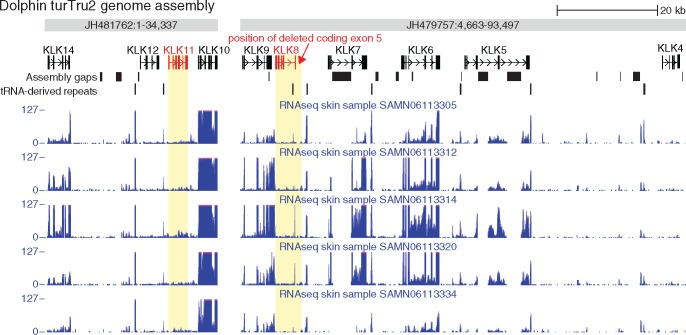Fig. 4.
—RNA-seq data from the dolphin skin show that KLK8 is not expressed. The coverage of RNA-seq reads obtained from dolphin skin tissue (GEO-accession: GSE90941) is shown for five representative dolphin individuals. The kallikrein gene cluster in the dolphin turTru2 assembly is located on the two scaffolds that are shown here. The exon–intron structure annotation of the genes where obtained by mapping human genes to the dolphin genome using CESAR (Sharma et al. 2016) and TransMap (Zhu et al. 2007). In addition to KLK8 and KLK11, two lost genes (see text), KLK4 that has a role in tooth enamel formation (Lu et al. 2008) and the less well characterized KLK12, do not exhibit a clear expression in the skin, consistent with a previous study (Komatsu et al. 2006). Several tRNA-glu derived SINE repeats (Shimamura et al. 1999) occur in the kallikrein cluster, including the KLK8 locus, and are highly expressed.

